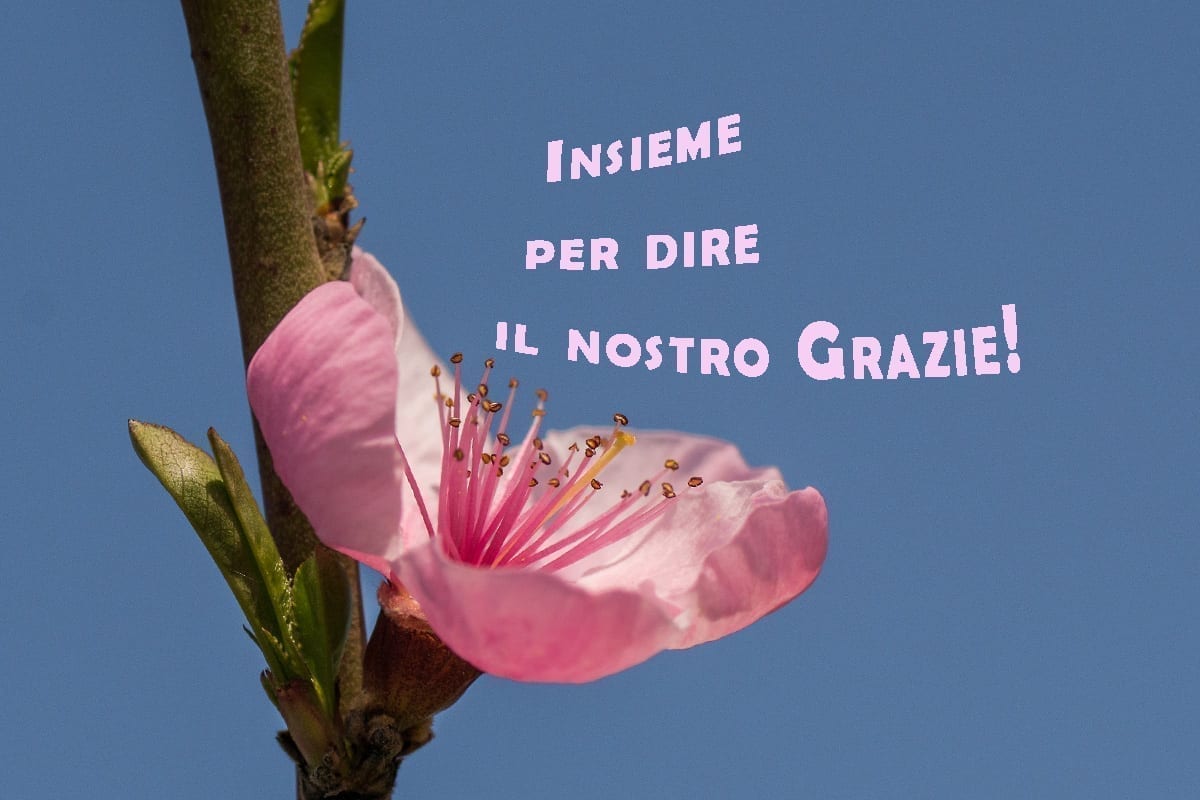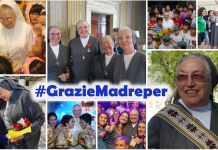Rome (Italy). The Superior General of the Institute of the Daughters of Mary Help of Christians, Mother Chiara Cazzuola, opens Circular no.1046 thanking the Lord for the successful outcome of the Triennial Verifications, celebrated so far with the Middle East-Europe Conferences (CIME), Africa and Madagascar (CIAM), with the Indian Provinces Conference (PCI) and that of East Asia (CIAO), which allowed her and the General Councilors to “know and understand more closely the vitality of the Salesian charism in the three continents.”
In the month in which the birth of Blessed Sister Maria Troncatti – is commemorated – in Corteno Golgi, Brescia, on 16 February 1883 – Mother dedicates the Circular to deepen her being a Mother, Missionary, Artisan of peace and reconciliation, slogan chosen in view of her imminent Canonization. “This is for all of us a time of special grace, a call to renew ourselves as an Institute to continue, with courage and joy, the path of holiness that God asks us to walk today.”
First of all, Mother
The maternal dimension is the trait that emerges clearly in Sister Maria Troncatti, a dimension that “generates abundance of life around itself and finds its source in a deep intimacy with the Lord.”
Her maternity is in fact deeply rooted in the Lord Jesus, nourished by constant prayer, which leads her to witness, with the tenderness and solicitude of a mother, the love of the Father towards all His children, so much so that the Shuar Indians affectionately call her madrecita. She writes to her family, “If you saw how much they love me! When they see me on horseback, they recommend, “Madrecita, come back soon!”
Maternal is the patience with which she educates to peace, to mutual forgiveness of the indigenous and colonists, groups constantly in conflict. She conquers hearts and faces risks and difficulties, trusting in Providence, for the good of “her Shuar children“. “She performs simple and effective maternal gestures. She welcomes children whom no one wants; she gives everyone affection, security, and serenity. She becomes an educator and catechist, opening up prospects for the future illumined by hope.”
One of the most significant aspects of her motherhood, highlighted by Mother Chiara, “is the relationship of trusting affection with Mary Help of Christians”, from whom she learns in turn to become a “helper” for the people entrusted to her. “In her, Marian filiality is not only a sentiment, but is consciously lived as an itinerary of Christian and Salesian formation. For this reason, it becomes a source of educative motherhood in the style of the Preventive System.”
Mother invites all the Daughters of Mary Help of Christians to entrust to Mary, following the example of Don Bosco and Sister Maria Troncatti, the educative evangelizing mission in the knowledge that “it is she who guides us, helps us, keeps our gaze open to new realities with a missionary and prophetic heart.”
Missionary
“The missionary dimension – recalls Mother Chiara citing the Constitutions (C 75) – is an essential element of the identity of the Institute.” It is in the first Mornese Community, in the “mystic” of living together that this dimension is consolidated and flourishes, taking momentum according to the evangelical dynamic whereby “life grows and matures to the extent that we give it for the life of others.”
And it is in the community of Nizza Monferrato, where she is in 1922 as a nurse, that Sister Maria Troncatti receives from Mother Caterina Daghero the destination, no longer among the lepers as she dreamed, but among the people of Ecuador who inhabit the Amazon forest. Despite the changed perspective, her missionary enthusiasm is not diminished in welcoming this obedience. In 1936 before leaving, she expressed to her family in writing, “I go there with all my heart. I always have my thought on the missions.”
“With all her heart – points out Mother Chiara – was the yardstick of her missionary passion so much so that, when Mother General sends her to work in the Amazon rainforest, she says that she is “happier every day” in her religious and missionary vocation”.
In the mission land, Sister Maria puts into action the Salesian “I will go” and the Preventive System, contagioning and transforming the Shuar people, devoting herself especially to the young people and to the promotion of women, often disadvantaged by the local culture.
“Sister Maria Troncatti, passionate about the Salesian mission, contagions people and her own Sisters by radiating her great love for the young, so that they may be happy in time and eternity. Her daring and the courage of her faith also nourish in young women the commitment to be ‘true missionaries’.”
Artisan of peace and reconciliation
With her strong desire to “help people meet Jesus” and to “give Him souls”, in 47 years of missionary life Sister Maria finds herself facing the “law of the jungle”, the revenge that reigns sovereign between settlers and Shuar, to which she responds with a tireless work of education to forgiveness, reconciliation, and peace between the two parties. “She cares for one and the other without distinction; she helps them to live in a more fraternal way. She dialogues and advises the colonist women to sow among the people words of goodness, justice, fraternity, and equality knowing that, through the educative power of women, it is possible to form future generations for a more respectful coexistence and the acceptance of diversity.”
Nevertheless, when the tensions between the two ethnic groups at the end of the sixties become more acute, she welcomes “the inspiration generated by her motherly heart to offer herself to God as a victim of reconciliation between the two peoples whom she loves so much. (…) With the power of persuasion and kindness, Sister Maria manages to stop the emerging vendettas and to be heard as a messenger of peace and forgiveness.”
The sign of peace between the two peoples is tangible after her death in Quito, caused by the crash of the plane on which she was going to the Spiritual Exercises. The rainbow remains in the sky until the time of her burial, and much more in the presence of the madrecita who accompanies settlers and Shuar in resuming “to live together with a new strength of fraternity,” according to what she had taught them.
Concluding the Circular, Mother Chiara invites all to contemplate “the most beautiful face of the Institute” represented by Saint Mary Domenica Mazzarello and the Sisters on their way to the honors of the altars, to open our heart “to the great Hope, with the grace and daring that come from God,” to sing the Magnificat for the Holiness recognized in them by the Church, and to entrust ourselves to Mary Help of Christians, so that, “together with the educating communities and the many young people we meet, we may shine as small lights in daily life and be signs of the Father’s foreseeing and merciful love, as Sister Maria Troncatti was.”
Mother also asks all the FMA, as she promised the Salesians of Don Bosco in the greeting addressed on February 16 at the opening of their 29th General Chapter Generale, to accompany the capitular work with prayer, affection, and esteem. “Their walking together in deep communion is a strong sign of hope for the Salesian Family, for the Church, for our Institute, and for young people all over the world. May Mary Help of Christians, Don Bosco, and our Saints guide and support them in looking to the future with courage and foresight.”
In concluding, she sends wishes for a good continuation of the Jubilee Year, “that it may truly be a time of grace and conversion to continue with a missionary heart our common journey of holiness.”



















gostei!